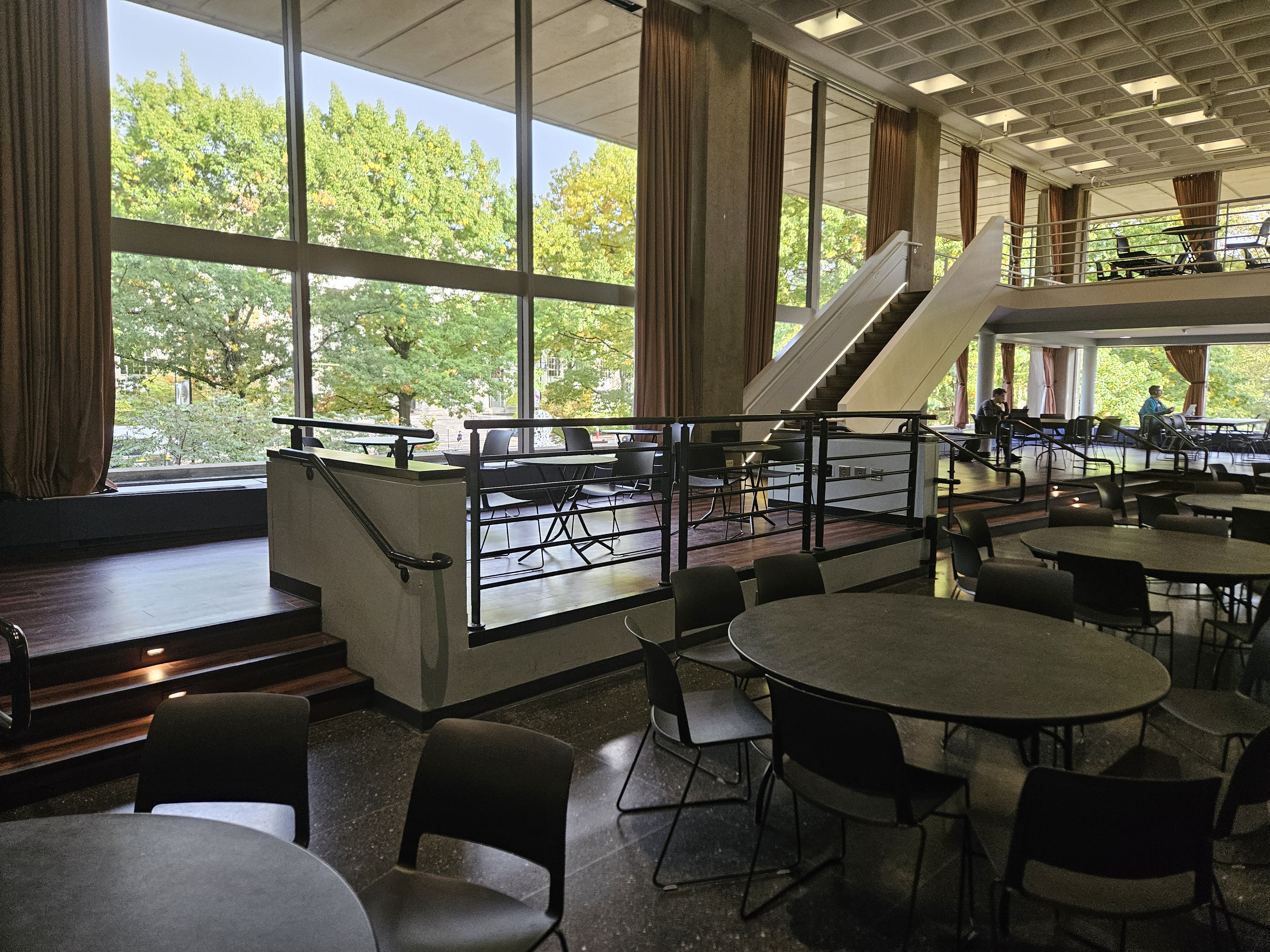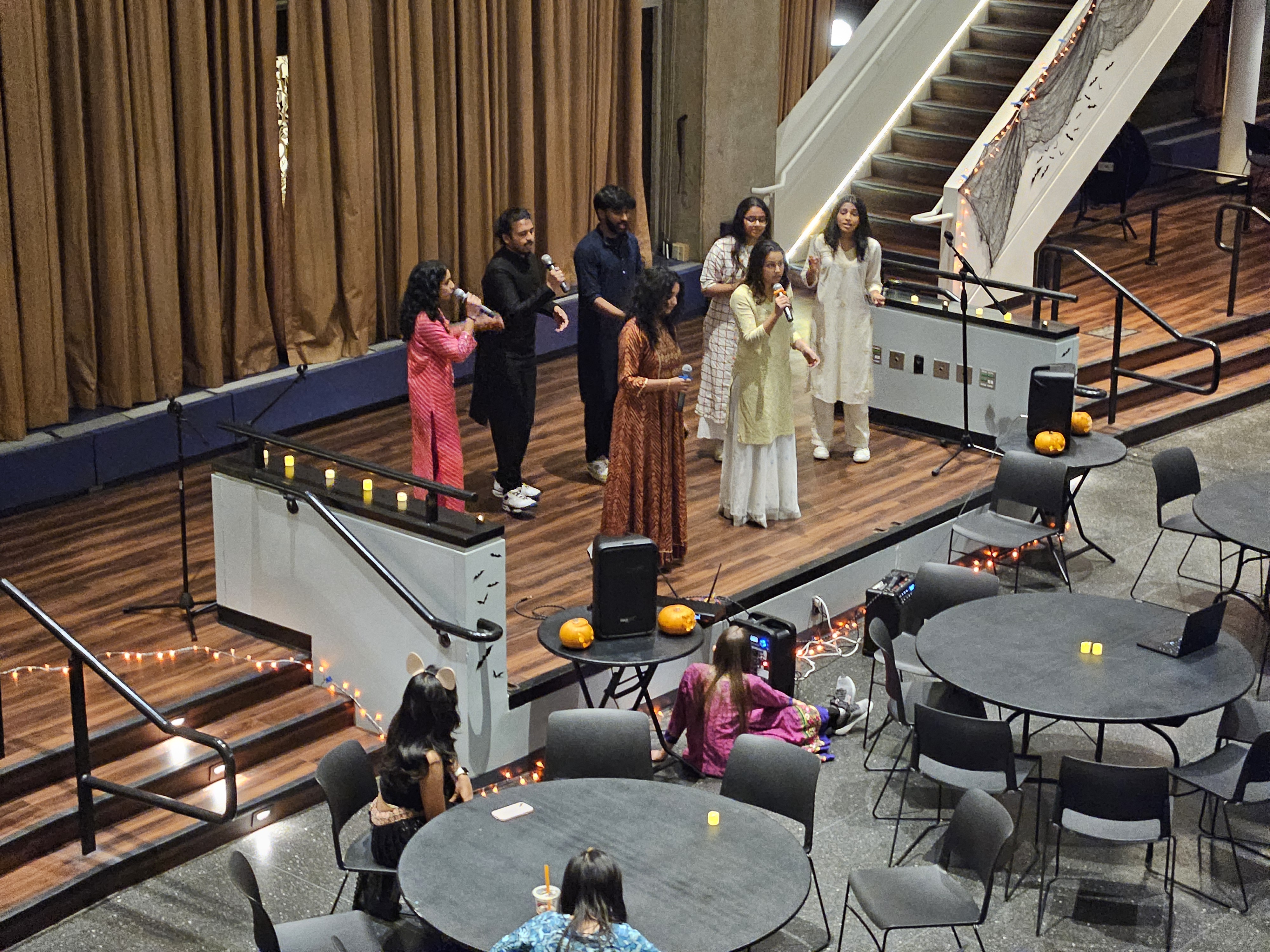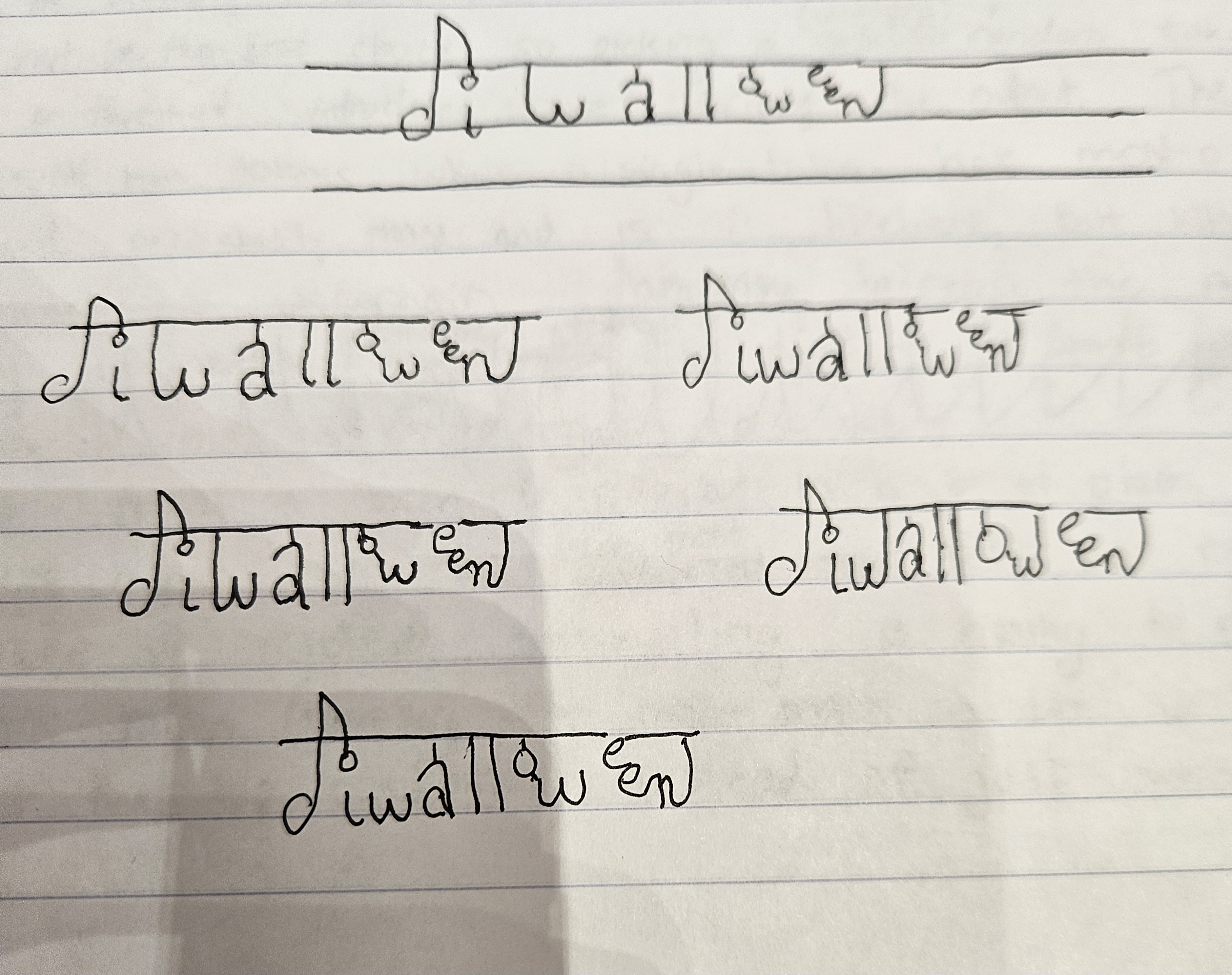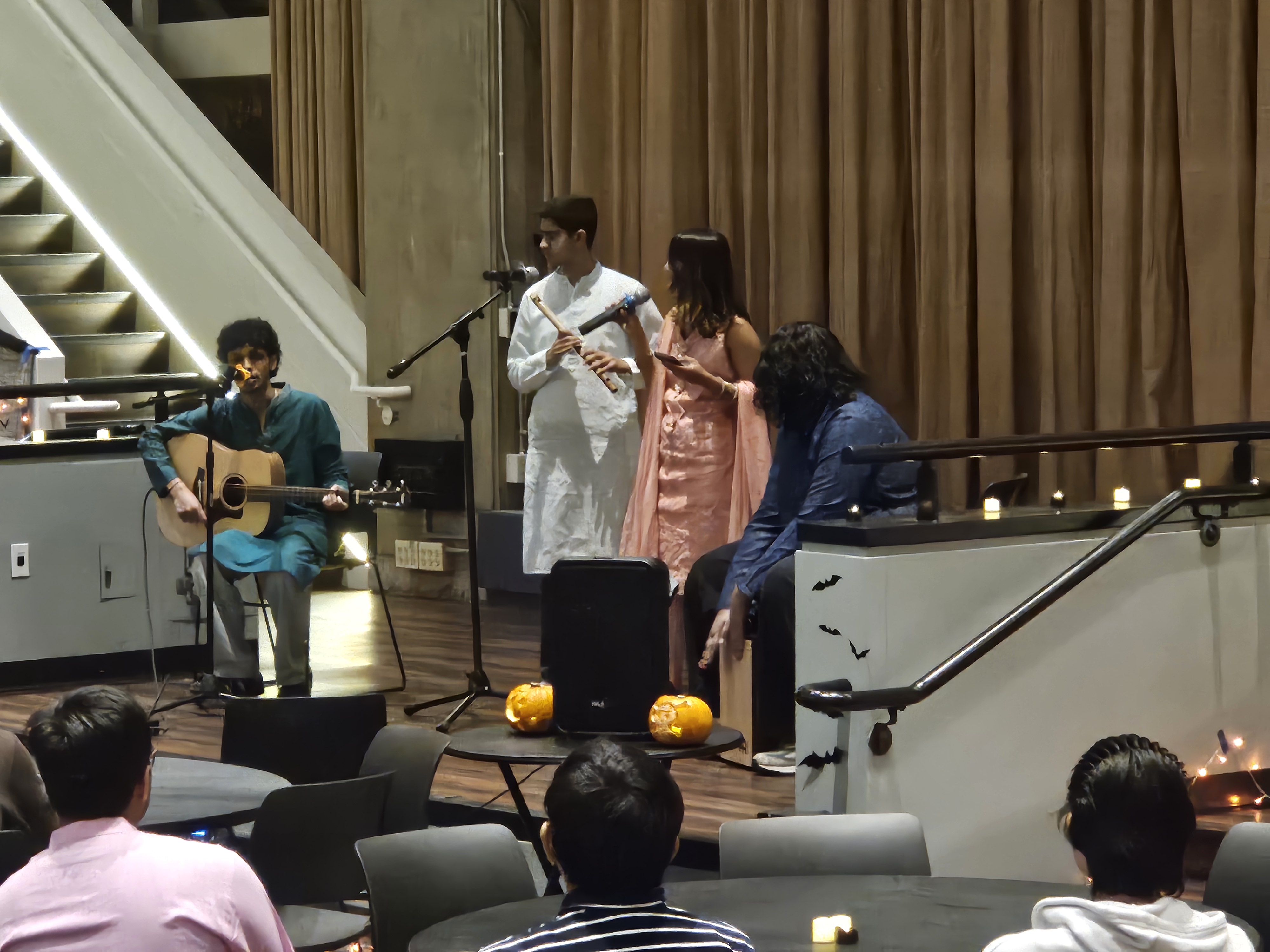How to put together a Diwali showcase concert
November 05, 2025


This past Sunday, my a cappella group--the MIT Ohms--put together a Diwalloween showcase concert. We booked Lobdell Dining Hall in the MIT Student Center (we've performed there at a few events in the past) and invited a few South Asian fusion music groups from around the region to perform with us. The event went quite well, and I now feel qualified to write about how to arrange such a showcase.
[forthcoming: post on the Ohms and why I joined]
The idea
The Ohms typically perform a few times throughout the semester, in addition to our semesterly showcase concert. These mid-semester performances enable us to share our music in different contexts (collegiate South Asian fusion performing arts showcases and non-South Asian a cappella festivals around the region, as well as various campus events), and it's also always valuable to publicly perform our arrangements and get "simulated game experience" prior to the end-of-semester concert.
There is usually a Diwali cultural showcase performance at MIT each fall, and the Ohms usually perform as one of a number of groups. By early October, I hadn't heard anything about one for this year, so I figured it was an opportunity for someone to step up and create an event in its stead. I had been wanting to create more community with the other South Asian fusion music groups in the region, so I started looking into reserving space around campus and began inviting groups to perform with us at this spontaneous event.
Space

I booked Lobdell Dining Hall and notified the campus event space managers what setup I would need. By default, the hall is set up for banquet-style dining, which meant we'd be in good shape for the show and subsequent dinner. (If you ask, they take down the railings and the small tables on stage beforehand.) The Ohms had also performed there at a past gig, so I knew the stage would be reasonably-sized.
Graphic identity
Given the date of our event -- November 2, 2025 -- I quickly came up with a name for our event: Diwalloween. After an extensive iterative design process ...


... I finalized a winning design. Two fellow Ohms--Apurva and Heidi--created the flyer, and Heidi touched up the logo, turning it from a pen-and-paper sketch into a respectable graphic that could be disseminated to the public.

Show development
The day before the show, Anooshka--one of the Ohms and one of our resident script-writers--wrote a script for the show. Roughly, the outline was that we had to "go on a magical musical interlude and harness the power of friendship to ward off" an evil spirit that had possessed her. She and I emceed the show and acted out the scenes in between each musical performance. The script was well-written and added necessary structure (and drama/humor/entertainment) to the show.
Performances
We were lucky to host Brown Barsaat and RPI Raaga, two South Asian fusion a cappella groups, as well as NU Aaroh, Northeastern's Indian Music Club, who often performs with an electric guitar, much to my delight. All the groups were fantastic, and each added their own diverse flavor of South Asian fusion music to the show. This event would not have been possible without the invited groups making their way to MIT and performing with us. Thanks as well to Shruti and Mary--the music directors of the Ohms--for all their work this semester preparing the group for this and other performances.



Sound
For our semester concert, we typically hire a professional sound company and give each member a handheld wireless microphone. But the Ohms also have our own audio setup, comprising four wireless mics, a receiver, a mixer, and two speakers, and we often use this setup for gigs around campus. It's a relatively basic setup in the world of live professional sound, but it works just fine whenever we don't need live mixing.
One of our music directors--Mary--ran the sound system for the show. As each group went through sound check, she adjusted the levels and walked around the space and took extensive notes on how to best configure the mixer for each set. During the performance, she sat near the mixer and adjusted it for each group according to her notes. The balance for the show was great, and her work here was critical.
Food
I wanted to feed everyone, so I lined up a caterer the week before and went to their shop on the Friday evening before to try out the food. The food was tasty, so we locked in an order of samosas for the audience and full dinner for the performers (and volunteers).
The food showed up during the first half of the show, and it came in several (heavy) trays. We couldn't find a cart, so Disha--an Ohms alum--and Jay--a friend of the Ohms--accompanied Heidi and me to carry the trays from the caterer's truck into the building and up a flight of stairs into the performance space. During intermission and then after the show, Heidi, Disha, and three other Ohms alums--Akila, Abinitha, and Pranav--were instrumental in making sure that everyone got food.
Assists
We got big assists from a couple other groups around campus.
Some of the performing groups needed microphone stands. We were luckily able to borrow three of these from the iHQ Media Suite in the Voxel Lab at iHQ (MIT Innovation Headquarters). Thanks as well to MIT Live for lending us a microphone stand (unfortunately our mic didn't fit but this was still much appreciated). It would have been impossible for the instrumental groups to perform without mic stands, and it would have broken our budget to buy these, so it was great to have quick access to this equipment.
The International Student Association hosted a Halloween event in the same venue on the previous night, and I attended with a couple of the freshmen in my a cappella group. The ISA had decorated the space with orange lights, Halloween webbing, and a bunch of electric tea lights, so near the end of their event I asked if they would let us keep the decorations up for our show the next evening and they graciously agreed. In the past, I would have been dismissive of the need for decorating the space, but this time around I realized that decorations would nicely set the scene for our event. In the end, the electric tea lights were a nice centerpiece for each table--thanks to Leena, one of the new Ohms, for setting them up--and the Diwali lights and webbing added to the ambiance. A couple of my friends also brought pumpkins that they had carved and placed them on the speaker tables, and that was a nice finishing touch.
And thanks to all the Ohms, Ohms alums, and friends who helped with cleanup at the end: a non-exhaustive alphabetized list includes Aarush, Anooshka, Apurva, Heidi, Jay, Leena, Roshni, Siyona, and Shruti.
Looking ahead
The Ohms have our 15th anniversary concert on November 22, 2025, and we're looking forward to performing our full set of twelve arrangements. I've written one whole-group arrangement for this semester's set, Girls Like That Gal (a mashup of Girls Like to Swing and That Man). I also wrote two small-group "subset" arrangements, both of which build on my recent foray into Hindustani classical music: Why Me in Raga Maalkauns (Peer Na Jaani) (based on a bandish, Peer Na Jaani, which I learned earlier this year) and Shaky x My Girl (in Raga Bhupali), to my knowledge the group's first Marathi song. We've also invited a few local South Asian arts groups (one a cappella, one instrumental, and one classical dance) to perform at various points in our show, and we're excited to share the stage with them.
On February 21, 2026, we're also hosting a new bid competition for All-American Awaaz (A3) 2026 in the Desi A Cappella circuit. Diwalloween was a good mini-scale test run for what it's like to host a big music showcase, and we learned a lot about what went well and what we can improve.
Diwalloween 2025 was also a great opportunity to connect with other groups from the region. During dinner, I asked all the performers to sit at tables with people from other groups, and this led to a lot of socializing and new connections. Hosting this event cemented my desire to organize more of these shows and continue attending other schools' with the Ohms in the future.